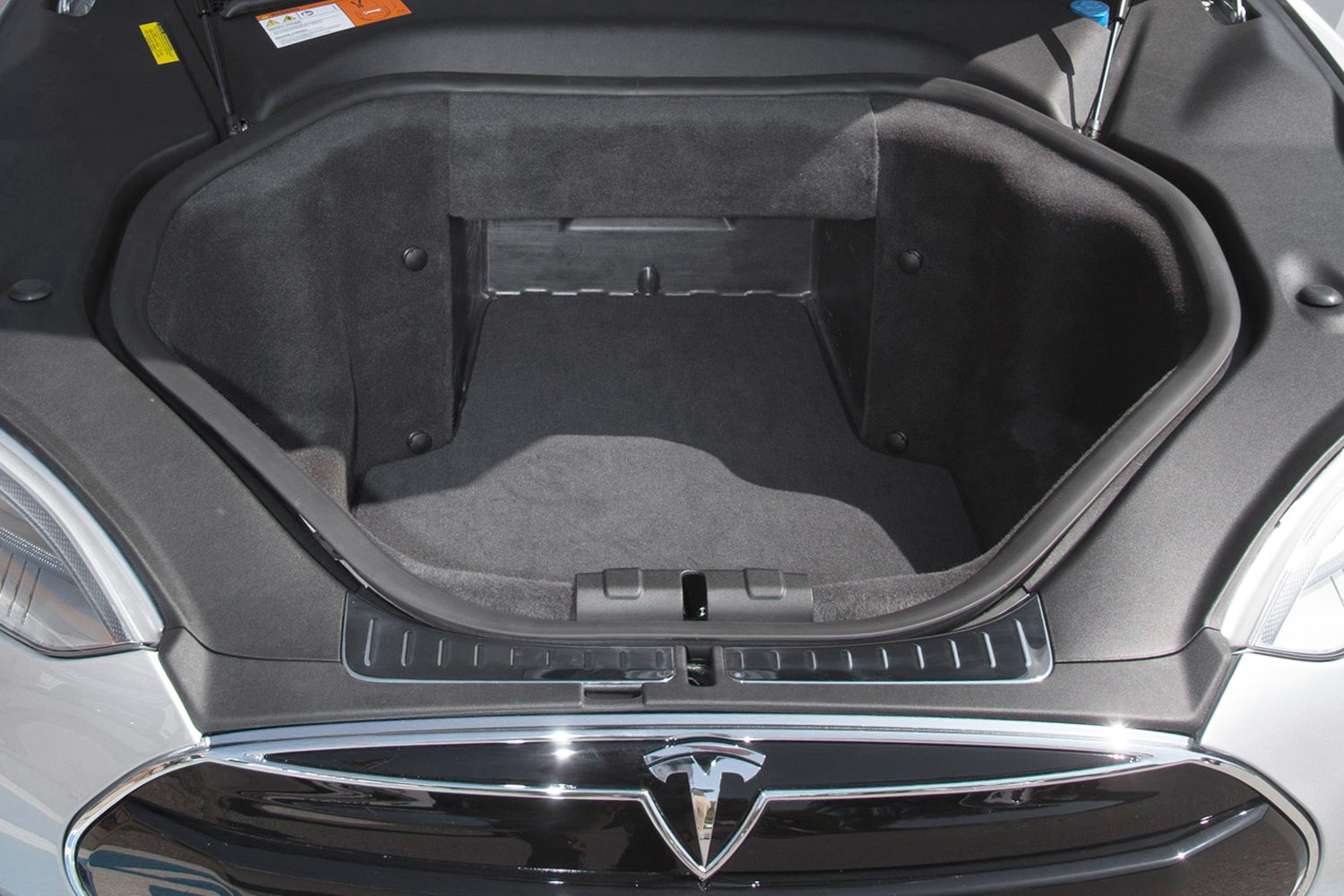"Frunk" is a new name for an old car component that's making a comeback. Find out what it is and what you can do with it if your next car has one.

What Is a Frunk and Why Do You Need It?

Frunks go way back. Rear engine Volkswagen Beetles, Chevrolet Corvairs, Porsche 911s and even the short-lived futuristic Tucker 48 all had frunks.
Telsa came up with the moniker “frunk” in 2012 for the extra space at the front of their electric vehicles (EVs). With their high-voltage battery usually at the bottom of the vehicle, EV frunks are now larger, making them practical for trips to Costco or hauling large suitcases.
On This Page
What Is a Frunk?
Frunk simply combines the terms “front” and “trunk.”
There’s no consensus about why a trunk is called a trunk. Some believe it goes back to the 19th century, when people placed “travel trunks” on the back of a horse and carriage to transport goods or personal belongings. Some car owners in the 1930s attached actual steamer trunks to the rear of their vehicles. Eventually automakers incorporated storage into the vehicles themselves, and the name “trunk” stuck.
Why Would You Need a Frunk?
@blvckmoses916 Who else underestimated the #fronttrunk on their #tesla ??? I dony know why i never used it until now. #teslamodely #modelyperformance ♬ original sound – Blvck Moses
Like a traditional rear trunk, a frunk is great for carrying groceries, sporting gear, tools or a first aid kit.
Originally, EV frunks were smaller than the traditional trunk in internal combustion engine (ICE) vehicles. As ICE vehicles became smaller to increase fuel economy, their trunks shrank as well, making EV frunks comparable in size to today’s trunks.
Though EVs have a conventional rear trunk, manufacturers eventually realized adding extra, practical space at the front of the vehicle just made sense. This helped “normalize” EVs into what car buyers have been accustomed to for decades.
Frunks are getting larger; newer full-size EV pickup trucks can accommodate two full size coolers. Innovative features are also being added, such as:
- Dividers, which can be removed to create one large cargo area;
- Removable, composite water-resistant inserts with a drain hole, making cleanup easy;
- USB and 120-volt chargers;
- Slide-out drawers or tool boxes;
- Hidden storage compartments;
- A 400-pound payload capacity;
- Built-in interior lighting to make nighttime loading and unloading cargo easier.
One downside of a weatherproof frunk: A lack of air circulation. This would make long-term storage of certain items (food, water, clothing or a battery jump starter) questionable.
How To Open and Close a Frunk
@carbonizedhorse Its so easy owning an #EV 🙌 #ford #mustang #MachE #Storage #frunk #cooler #groceries #Atl #Money #Save #Charge #Gas #VO #Voiceover #Home #Ga @ford ♬ original sound – Lisa’s EV lifestyle
Like a conventional hood, most frunks open by pulling on a lever/cable from inside the cabin. Depending on the year, make and model, you can open a frunk with the key fob, a switch inside the vehicle, touchscreen controls, or even your phone if your vehicle’s manufacturer offers an app.
Closing and latching a frunk lid is the same as a regular hood:
- Lower the lid to about six inches above the latch.
- Remove your hands and let the lid drop until it catches the safety latch.
- Firmly press down two or three times with the palms of your hands resting on the front edge of the lid until latched.
- Pull up on the lid to make sure it’s securely latched and locked in place.
If your EV lacks a lever/cable to open the frunk, it may not open if the 12-volt battery dies. Some manufacturers place a connector behind a removal bumper plug to power the battery, allowing you to access the frunk or open the doors.
Additional Benefits of a Frunk
Besides the extra storage space, a frunk can also contribute to driver and passenger safety. It behaves like a crumple zone, absorbing some of the energy generated during a crash, thus protecting cabin occupants.
Placing stuff in a frunk can distribute vehicle weight more uniformly to improve handling. However, never exceed your vehicle’s Gross Vehicle Weight Rating (GVWR). This includes the weight of the vehicle, occupants, fuel and cargo, The GVWR can be found on the tire and loading information label or in the owner’s manual.



















